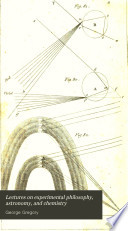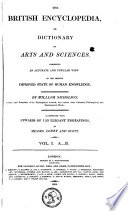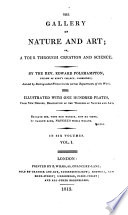 | 1844 - 784 pages
...law discovered by Kepler, which we have already noticed, namely : ' That the squares of the periodic times of the revolutions of the planets, are as the cubes of their distances,' is a law which is established ou the most accurate observations, and by which all the planets,... | |
 | George Gregory - Astronomy - 1808 - 452 pages
...central star or sun is at S, which is one of the foci. The second law of Kepler is, that the square of 'the times of the revolutions of the planets are as the cubes of their distances from the sun. That is, if we compare the square of the time which any two of the primary... | |
 | William Nicholson - Natural history - 1809 - 716 pages
...had the idea of comparing them with the powers of the numbers by which they are expressed, he found that the squares of the times of the revolutions of the planets are to each other as the cubes of their mean distances from the sun ; and that the same law applies equally... | |
 | William Enfield - Astronomy - 1811 - 476 pages
...the squares of those distances. It appears from observation, that the squares of the periodical times of the planets are as the cubes of their mean distances from the sun. For example, Saturn's periodical time being found to be to Jupiter's about as 30 to 12, and the distance... | |
 | Samuel Vince - Astronomy - 1811 - 260 pages
...agreement between them. Thus he discovered that famous law, That the squares of the periodic times of all the planets are as the cubes of their mean distances from the sun. Sir I. Newton afterwards proved that this is a necessary consequence of the motion of a body in an... | |
 | Jedidiah Morse - Geography - 1814 - 696 pages
...portions of the space, contained within the planet's orbit. 2. " The squares of the periodical times ot the planets are as the cubes of their mean distances from the sun." That is, as the square of the time, which any planet takes to describe its orbit, is to the square... | |
 | Samuel Vince - Astronomia - 1814 - 602 pages
...agreement between them. Thus he discovered the famous Law, That the squares of the periodic times of all the planets are as the cubes of their mean distances from the sun. Sir I. NEWTON afterwards proved that this is a necessary consequence of the motion of a body in an... | |
 | Edward Polehampton - 1815 - 592 pages
...their mean distance from the sun. Whence Kepler discovered his third fundamental law; namely, III. The squares of the times of the revolutions of the planets are to each other as the cubes of their mean distances. The ellipses, which the planets describe, however,... | |
 | William Nicholson - Natural history - 1819 - 370 pages
...had the idea of comparing them with the powers of the numbers by which they are expressed, he found that the squares of the times of the revolutions of the planets are to each other as the cubes of their mean distances from the sun; and that the same law applies equally... | |
 | George Gregory - Science - 1820 - 458 pages
...of a planet. The central star or sun is at S, which is one of the foci. The second law of Kepler is, that the squares of the times of the revolutions of...as the cubes of their mean distances from the sun. That is, if we compare the square of the time which any two of the primary planets occupy in completing... | |
| |